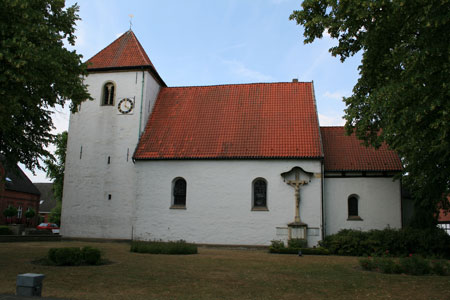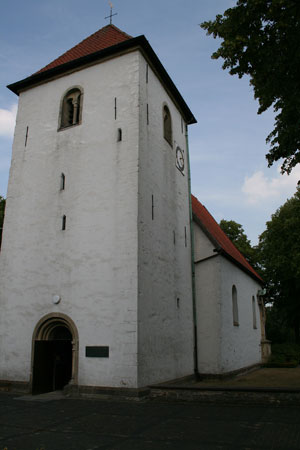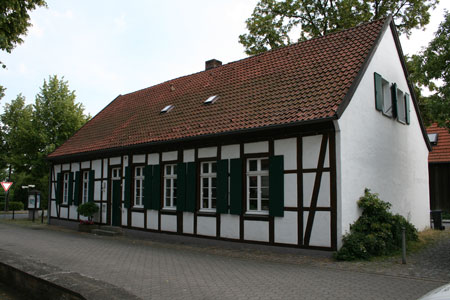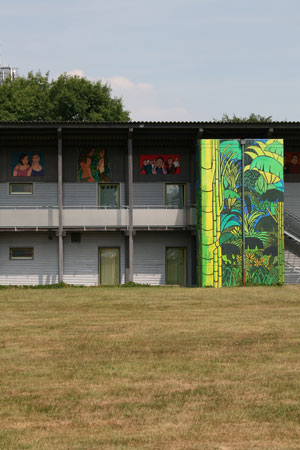Angelmodde

Angelmodde has around 8.000 citizens and stretches over a surface of roughly 0,5 km². The village name was mentioned as 'Angelmudden' for the first time in 1175 already. The confluence of Werse and Angel probably gave the village its name: Mud or mund (mouth) means translated 'Mündung' (estuary) so here the Angel river, which discharges into the Werse.

The earliest traces of human settlement in Angelmodde stem from the Mesolithic period. The extensive discovery of an urn graveyard at the border to Gremmendorf is of Bronze Age origin. The oldest cultivated land, which points to permanent settlement stems from the time of 800BC. At the edge of the long strip fields, on little mounds buildings were constructed, among them the late Höfemann, Althoff and Homann. At the end of the 9th-century, the Münster church fortune was shared between the bishop and the chapter. Thus the bishop received the fiefdom around Lütkenbeck House, while the farmsteads in the Angelmodder area fell to the chapter.

Until the late Middle Ages more farmsteads emerged. The older, by now much larger farmsteads were divided: Through so-called couple farms, like the Althoff (old farm) and Niehoff (new farm). Between 1042 and 1063, the Münster canon Nithung came into the possession of these estates. He constructed a loam castle in the Werse loop near Angelmodde, from which the farm Hoffschulte developed later. Presumably donated Nithung also the church St. Agatha, as the holy Agatha was probably their family patron saint.


